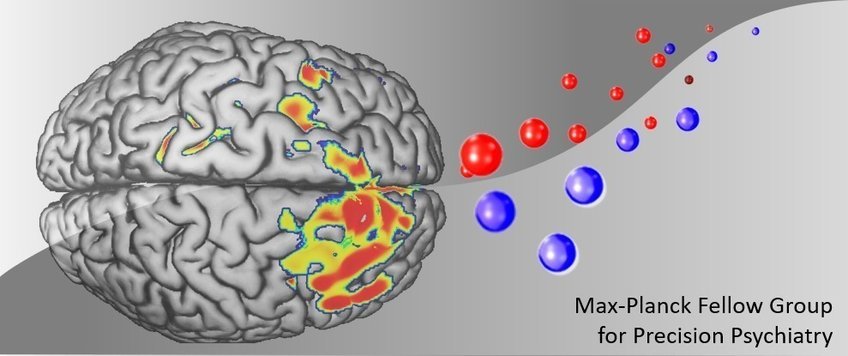
Precision Psychiatry
The recent years have witnessed the rapid development of computer-assisted diagnostic and prognostic procedures in medicine. Machine learning and AI algorithms are increasingly being used to extract patterns from large and complex databases which, unlike in the past, no longer only describe differences between patient groups or associations between different clinically relevant characteristics but can be used for the prediction of individual disease courses and outcomes. This opens completely new possibilities for personalization in medicine, which allow the individual risk and resource profile of the single patient to be better accommodated in therapy planning than ever before.
In psychiatry in particular, these developments have led to new biomarker-based research approaches that aim to correctly assess the individual risk of developing psychiatric illnesses in the early disease stages and to initiate preventive interventions on the basis of these more precise and earlier predictions. In addition to improving the early detection of mental illnesses, predictive psychiatry endeavours to develop clinical and biological models for a better prediction of individual and differential therapeutic response. Pattern recognition is used to obtain signatures from clinical, neuropsychological, imaging-based and, where appropriate, genetic data that can be applied to individual patients for a quantitative prediction of desired and undesired drug effects. Should these experimental methods prove to be robust and replicable in the next few years, it would be possible to assemble a combination of therapeutic methods that is maximally effective and least burdensome for the individual patient.

Early detection of psychiatric disorders
Since 2008, these research approaches by our research group, which in 2013 developed into the Section of Neurodiagnostic Applications at the Clinic for Psychiatry and Psychotherapy of the LMU. The group has a growing track record of important scientific contributions in the field of early detection of psychotic diseases, differential diagnostics of affective and non-effective psychoses and the modelling of the response to antipsychotics and brain stimulation procedures. As part of these efforts, the team has lead the EU-funded project PRONIA (Prognostic Tools for Early Psychosis Management) which recruited a cohort of nearly 2000 study participants, who were extensively clinically and biologically characterized. In addition, decisive progress has been made in establishing an efficient scientific infrastructure such as the development of a system for the management of clinical data and the production of a machine learning software (NeuroMiner; www.pronia.eu/neurominer). Within the PRONIA project, we established a collaboration with three large-scale international projects under the framework of the NIH-funded project HARMONY (MH081902), aiming to improve our understanding of clinical high-risk state for psychosis, construct and validate predictive models throughout the world.
Collaborative research platform for comparative machine learning analyses
The new Max Planck Fellow Group of Precision Psychiatry will create new avenues for collaboration between the Section of Neurodiagnostic Application at LMU and the rich research portfolio pursued by the Max Planck Institute of Psychiatry. In particular, we will have the opportunity to conduct comparative machine learning analyses to study the commonalities and differences of psychotic and affective disorders from the at-risk to the relapsing stages of the disease process and from a lifespan perspective. The planned collaborative research platform aims at facilitating a deeper insight into the heterogeneity of both sets of psychiatric disorders. If successful, this progress will translate into more precise predictive signatures for individualised differential diagnosis and treatment.
This is a selection of our current projects:
- Detection of psychiatric illness subtypes for better diagnoses, prognoses and treatment selection (D. Dwyer)
- Phenotype and impact of formal thought disorder in individuals in the early stage of psychosis (Ö. Öztürk, supported by Else-Kröner-Foundation)
- Multivariate models investigating the transdiagnostic neuromorphological fingerprints of environmental and psychosocial risk stressors (D. Popovic, supported by Else-Kröner-Foundation)
- Multiscale, multimodal stratification and comorbidity analysis in psychiatric disorders (R. Paul)
- Brain-symptoms multivariate covariance pattern in psychosis (A. Ruef)
- Investigation of novel data-driven multivariate methods to detect surface-based neuromorphological patterns mirroring genetic or pathophysiological mechanisms in affective and non-affective psychosis (R. Sanfelici)
- Neuroanatomical underpinnings of comorbid psychiatric diseases investigated using advanced, high-dimensional machine learning approaches (A. Khuntia, supported by IMPRS-TP)
- Graph analyses of positive and negative schizotypy-associated brain functional connectivity abnormalities (S. Tovar Perdomo, supported by IMPRS-TP)
